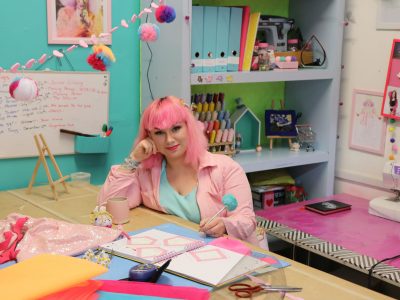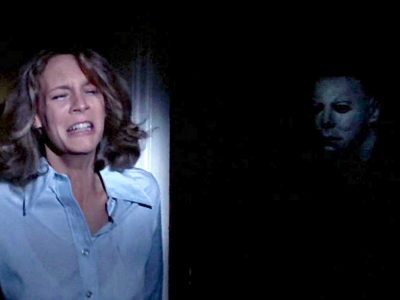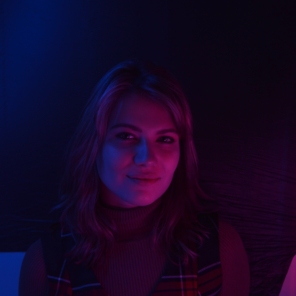Queer is not a Genre: Wildhood, Girls Girls Girls, and the importance of Multi-faceted Characters
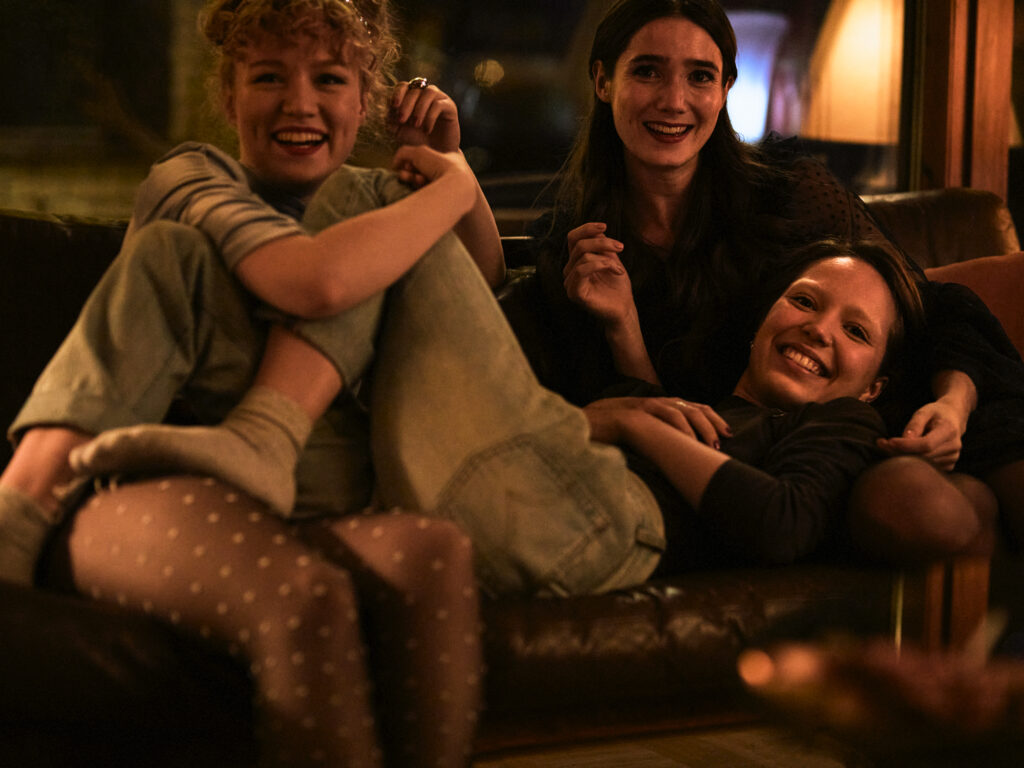
As part of Queer Vision Film Festival, Sally explores the themes in “Wildhood” and “Girls Girls Girls”.
‘Queer’ is a beautiful term, but it isn’t a genre
It’s not rocket science: I’m queer, but I’m also left-handed, can’t cook, and watch too much TV. I love Joni Mitchell. I have an appendix scar. I’m part of a friendship group. I have a life beyond my sexuality; it makes up a lot but not all of me. Films are a lot like people, in that respect.
I love films that centre around queer people; their panic and joy make my panic and joy feel normal. But something inside of me stirs when someone refers to a ‘Queer Movie’. What exactly does that mean? Does it mean it’s a film about being split in two, or being ostracised, or feeling like a disappointment? I understand where this sentiment comes from, but it seems to me that people have forgotten that ‘Queer’ isn’t only a term for the genre of tortured-coming-outs and heart-breaking-HIV-epics. If you want to film a tragedy, say tragedy with your chest.
Girls Girls Girls and Wildhood are what people may call ‘queer’ films. The main characters in each are unflinchingly and unapologetically themselves by the time the credits role. They love who they love and they exist as a figure outside the usual rungs of society. But what makes these films so moving, at least to me, is that they are part of genres in their own right.
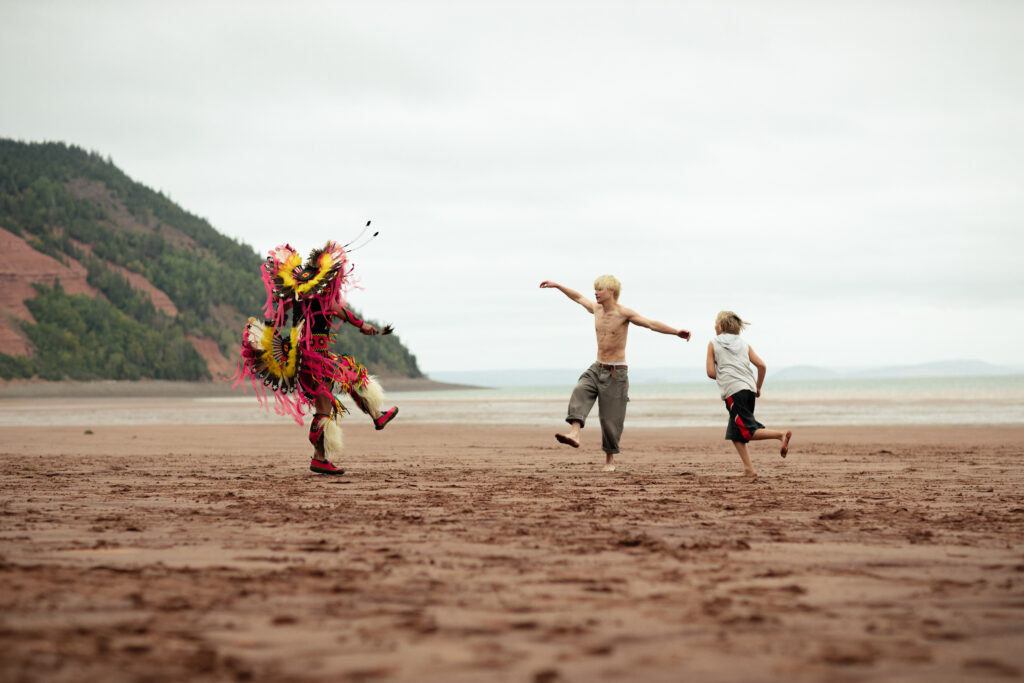
Still from Wildhood, part of Queer Vision 2022.
Wildhood, directed by Bretten Hannam, follows Link, a young man living with his abusive and aggressive father and younger half-brother, Travis. He’s always believed his Mi’kmaw mother to be dead but when he scours his father’s room for keys to his truck and an escape route, he discovers a heap of never-received birthday cards that lead to a different journey entirely. Link and Travis thereby set off on what can only be described as a classic road trip, and the movie becomes a scenic masterpiece as the boys become bigger boys (not men, they still have a lot of growing to do) in search of Link’s mother. They meet Pasmay at a service station, who is the catalyst for Link’s two dominant, but not exclusive story arcs: his coming to terms with his heritage and his acknowledgement of his sexuality. Their love story is beautiful but, as in real life, is a symptom of something greater: Link going on a journey with himself.
They are queer characters, but they are dimensional
What Wildhood does so wonderfully is centre queerness within the Road Trip genre; it isn’t treacherous in its portrayal of queer realisation and coming out and it shows that there’s simply more to Link and Pasmay than their growing attraction and love for one another. Link is a substitute father for his little brother. Pasmay is a pow wow dancer, keen to help Link realise that he is stronger in appreciating his roots than denying them. They are queer characters, but they are dimensional and whilst all of the characters suffer some kind of hardship, we see what we would in any Road Trip movie. We see them grow, stretch, and accept themselves scattered amongst wonderful scenic shots of the Mi’kma’ki. The absent mother, appearing at the end, embraces her son, we don’t see her approve or disapprove of Link’s sexuality; she is simply, as she would be in that moment before the dust settles, thrilled to have her son back. The film on a whole encapsulates characters who are more than just queer and the journeys travelled are more than a commentary on sexual awakening.
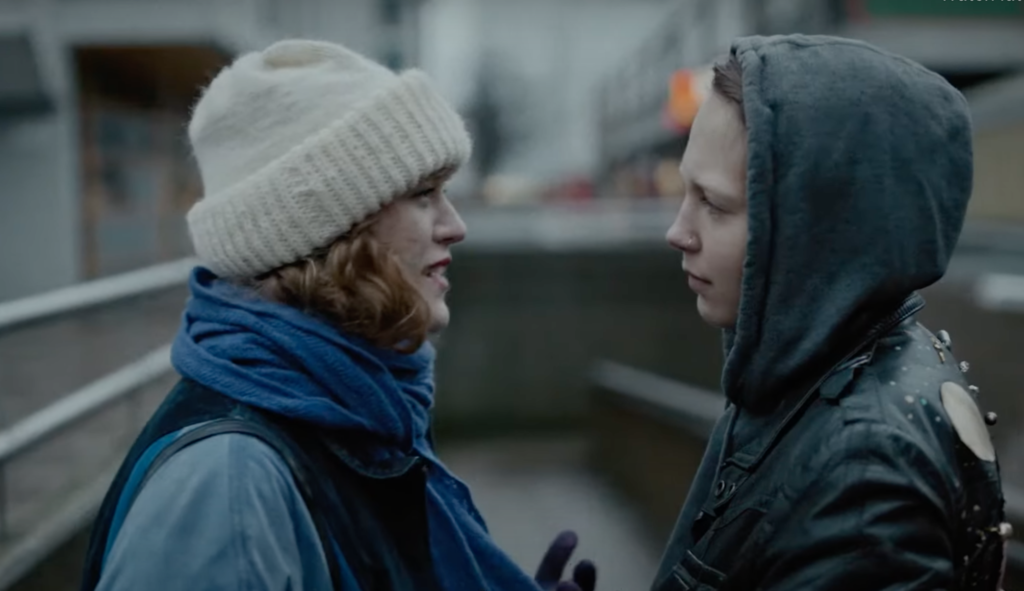
Still from Girls Girls Girls, part of Queer Vision 2022.
Director Alli Haapasalo’s chosen genre of choice is Coming of Age, in the best way possible. Original Finnish title being Tyottö Tyottö Tyottö, Girls Girls Girls centres on the lives of three young women who navigate what is to be young, sexually active, and emotional. Best friends, Mimmi and Rönkkö are clearly an ‘opposites attract’ situation; Mimmi is confident and comfortable with who she is sexually, but is cynical of love and lives in the shadows of her mother’s new marriage and baby brother. Rönkkö is sweet, charming and totally perplexed when it comes to sexual desire; she knows she’s straight, but she has no idea how to get herself aroused when it comes to the act itself. Her exploration of her own desires is fresh and necessary; if I’d watched something like this when I was younger, I’d have figured a lot of stuff out earlier. It also opens doors to conversations about how much sexual intercourse is a necessary part of love and of life, and prods the viewer to remember that love doesn’t require physical proof to be real.
Queerness is there and there is a wonderful safeness about the film, but the girls’ nuanced experiences and identities go further than any term or label
Mimmi embarks on a whirlwind romance after having an intense connection with Emma, a young ice skater so caught up in the need to be perfect she is missing what it means to be a teen. They connect, and disconnect, and rekindle by the end of the film. Once again, what’s so refreshing about the portrayal of queerness in this film is that Haapasalo has thrown the rule book out of the window: these girls aren’t trialling it. They aren’t confused, or tortured. Sure, they’re stressed and angry and they argue a lot, but that’s because they’re teenagers, not because they’re a victim of bi-panic, or internalised homophobia, or familial rejection. In fact, when Emma’s mother meets Mimmi for the first time, she is overjoyed for no other reason than Emma having someone, in any capacity, outside of her training. Queerness is there and there is a wonderful safeness about the film, but the girls’ nuanced experiences and identities go further than any term or label. They’re girls, some of whom are queer, who are coming to terms with who they are.
I suppose what this article is saying in part, has been stated before; that queerness isn’t just about the bad bits. But beyond that, I want to watch films where queer people aren’t just about the queer bits. Yes, it’s a huge part of who we are, but we are so much more than that. I want queer teens who are practising for a huge recital, I want queer mafia bosses, I want queer rom com characters and queer super villains and queer witches and wizards. I want all the genres available to us, with us in them, without our involvement being paused at our sexuality or gender identity. ‘Queer’ is a beautiful term, but it isn’t a genre; it’s not even a sub-genre. It’s certainly a part of what makes us, but it alone is not enough to categorise an entire film- and if it is, the film maker is doing something wrong.
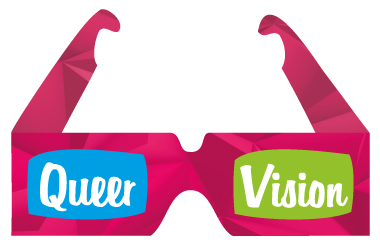
Queer Vision Film Festival (Friday 24 June – Sunday 10 July), presented by Bristol Pride is bigger than ever this year – continuing to bring you a diverse programme of new release LGBT+ films from around the globe, including independently-made features and award-winning short films. There’ll be tears of joy and heartbreak, conversations started, DJs, dancing and empowerment. This year’s Queer Vision Film Festival is supported by BFI, with funds from the National Lottery.
Wildhood is available to watch as part of Queer Vision, on Wed 29 June at Watershed.
Girls Girls Girls is available to watch as part of Queer Vision, on Sat 2 July at Watershed.

About Rife



